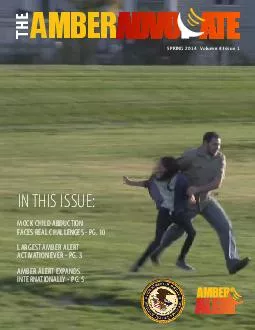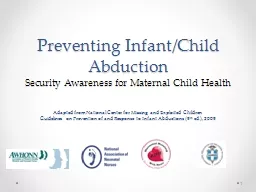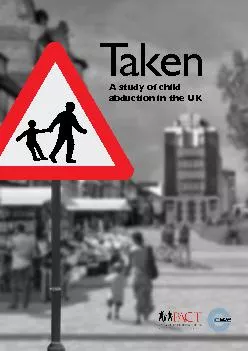PDF-SPRING Volume Issue IN THIS ISSUE MOCK CHILD ABDUCTION FACES REAL CHALLENGES PG
Author : briana-ranney | Published Date : 2015-03-17
10 LARGEST AMBER ALERT ACTIVATION EVER 57375 PG 3 AMBER ALERT EXPANDS INTERNATIONALLY 57375 PG 5 brPage 2br SPRING 2014 WHATS IN THIS ISSUE OF PAGE 3 PAGE 4 PAGE
Presentation Embed Code
Download Presentation
Download Presentation The PPT/PDF document "SPRING Volume Issue IN THIS ISSUE MOC..." is the property of its rightful owner. Permission is granted to download and print the materials on this website for personal, non-commercial use only, and to display it on your personal computer provided you do not modify the materials and that you retain all copyright notices contained in the materials. By downloading content from our website, you accept the terms of this agreement.
SPRING Volume Issue IN THIS ISSUE MOCK CHILD ABDUCTION FACES REAL CHALLENGES PG: Transcript
Download Rules Of Document
"SPRING Volume Issue IN THIS ISSUE MOCK CHILD ABDUCTION FACES REAL CHALLENGES PG"The content belongs to its owner. You may download and print it for personal use, without modification, and keep all copyright notices. By downloading, you agree to these terms.
Related Documents














